Not all sound reaches us through loudspeakers, and the advent of the Sony Walkman (and later, the iPod and iPhones) has led many listeners back to headphone stereo. In this section, we define the very different type of problems and their solutions as applied to this alternative form of listening.
1. A Brief History
The history of modern headphones can be traced back to the distant first days of the telephone and telegraph. Then, headphone transducers for both telephone and radio worked on the same moving-iron principle-a crude technique compared to today's sophistication, but one which served so well that they are still to be found in modern telephone receivers.
Moving-iron headphones suffered from a severely restricted frequency response by today's standards, but they were ideal. These sensitive headphones could run directly from a " cat's whisker " of wire judiciously placed on a chunk of galena crystal. Radio could not have become such a success so early in its development without them.
As " cat's whiskers " bristled around the world, these sensitive headphones crackled to the sound of the early radio stations and headphones became as much a part of affluent living as the gramophone. But the invention of sensitive moving-iron loudspeakers was the thin end of the wedge for headphones. Although little more than a telephone earpiece with a horn or radiating cone tagged on (with developments like the balanced armature to increase sensitivity and reduce distortion), they freed individuals or even whole families from the inconvenience of having to sit immobile.
Later, in the 1930s, with the invention of the then revolutionary but insensitive moving-coil loudspeaker and the development of more powerful amplifiers to drive them, headphones were largely relegated to the world of communications, where they stayed until the mid 1950s, when they underwent something of a revival.
Why the change? In a nutshell, stereo. Although stereo was developed in the thirties by Alan Blumlein, it was not to see commercial introduction, via the stereo microgroove record, until the 1950s. Hi-Fi , as we now know it, had been developing even before the introduction of the LP, with the 78 rpm record as its source, but the introduction of the microgroove record and then stereo were definitely two large shots in the arm for this emergent science of more accurate sound reproduction. Stereo was also a major stimulus to headphones, and although it may seem an obvious thing now, it took an American Henry Koss to think of the idea of selling stereo headphones as " stereophones " and creating a whole new market for quality stereo headphone listening. Needless to say, Koss has not looked back since and neither has Sony since the introduction of its first Walkman personal cassette player. Ironic, perhaps, because stereo was originally developed by Alan Blumlein for loudspeaker reproduction!
2. Pros and Cons of Headphone Listening
Good headphones, having no box resonances, can produce a less colored sound than loudspeakers, even today. Headphones have the further acoustic advantage of not exciting room resonances and thus giving the listener a more accurate sense of the recorded acoustics.
However, headphones don’t seem capable of producing the sheer impact available from loudspeakers, and unfortunately, stereo images are formed unrealistically inside the head due to the way stereo is recorded for loudspeaker reproduction.
None of these disadvantages matter much if your prime requirement is privacy or, in the case of Walkmans, portability. You can cheerfully blast away at your eardrums without inflicting your musical tastes on others. The closed back type of headphone in particular is very good at containing the sound away from others and insulating the listener from outside sounds.
2.1 Dummy Heads
One way of overcoming the sound-in-the-head phenomenon that occurs when listening to normal speaker-oriented stereo through headphones is to record the signal completely differently using microphones embedded in artificial ears in a dummy human head.
This " dummy head " recording technique effectively ensures that each listener's ear receives a replica of the sound at the dummy head's ear positions. The result is much greater realism, with sounds perceivable behind, to the side, and in front of the listener, but not inside the head.
The exact location of sound images depends to some extent on how similar the listeners ' ears are to the dummy's, but even using a plastic disc for a head-like baffle between two microphones gives very passable results.
Why then has this not been taken up more widely?
In a word, the answer is loudspeakers.
Dummy head recordings don’t sound at all convincing through loudspeakers due to the blending of sounds between the microphones that occurs around the dummy head during recording. The only way to listen to dummy-head recordings with loudspeakers is to sit immediately between them and listen as if they were headphones, which is not exactly practical.
Nevertheless, listening to good dummy-head recordings through fine headphones is an experience that is not easily forgotten. The sound can be unnervingly real.
2.2 Cross-Blending (aka cross-feeding)
Other ideas used to try to reduce or eliminate the unwanted images in the head with headphone stereo have centered around cross-blending between the two stereo channels to emulate the influence the listener's head would normally have. In other words, to reproduce and imprint electronically the effect of the listener's head on the stereo signals.
The head has two main effects. First, it acts as a baffle, curtailing the high frequencies heard by the ear furthest from the sound. Second, it introduces a time delay (or rotating phase shift with increasing frequency) to the sound heard by the furthest ear from the source.
Naturally such a simulation can only be approximate. Basic circuits simply cross-blend filtered signals between channels to emulate the absorptive factor. More complex circuits have been devised to introduce a time delay, in addition to high-frequency absorption, into the cross-blended signals. This is reported to be more effective, lending a more natural out-of-the-head sound to headphone listening with normal stereo recordings.
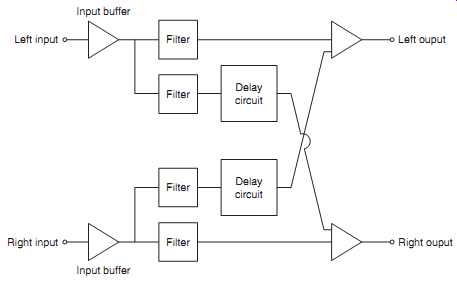
FIG. 1 : Block diagram of a headphone cross-blend circuit (cross-feed) with
delay.
2.3 Bi-phonics
There were attempts in the 1970s to emulate dummy-head listening when using loudspeakers. The technique was known as biphonics and the idea was to cross-blend signals feeding two front-positioned loudspeakers to give an all-round effect, with sounds appearing to come from behind the listener as well as in front ( FIG. 1 ). Surprisingly, the system worked, but only when the listener's head was held within a very limited space in front of the speakers. Predictably, the idea did not catch on.
3. Headphone Types (physics)
3.1 Moving Iron
Early headphones relied on many turns of very fine wire wound on to a magnetic yoke held close to a stiff disc made of a " soft " magnetic alloy such as Stalloy ( FIG. 2 ) or neodymium. A permanent magnet pulled the thin disc toward the yoke with a constant force and audio signals fed to the coil caused this force to vary in sympathy with the input. They were very sensitive, needing hardly any power to drive them, and were very poor in sound quality due to the high mass and stiffness of the diaphragm, which caused major resonances and colorations-not to mention distortions due to magnetic nonlinearities.
Currently used in telephone receivers, they are not found today in any application requiring high-quality sound. That is reserved for other more advanced techniques.
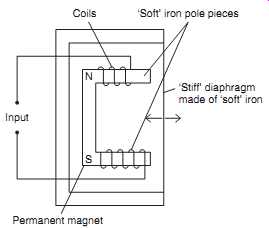
FIG. 2 : Moving-iron headphone. The current flowing in the coil either strengthens
or weakens the force on the soft iron diaphragm. AC audio signals thus vibrate
the diaphragm in sympathy.
3.2 Moving Coil
Moving-coil headphones ( FIG. 3 ) work in exactly the same way as moving-coil loudspeakers. A coil of wire, suspended in a radial magnetic field in an annular magnetic gap, is connected to a small radiating cone.
When an alternating audio signal is applied to the coil, the coil vibrates axially in sympathy with the signal, recreating an analogue of the original wave shape. The cone converts this into corresponding fluctuations in air pressure, which are perceived as sound by the listener's nearby ears. FIG. 4 shows a cut-away view of a Sennheiser unit.
The major difference, of course, between moving-coil headphones and loudspeakers is that the former are much smaller, with lighter and more responsive diaphragms. They can consequently sound much more open and detailed than loudspeakers using the moving-coil principle. They are usually also much more sensitive, which can mean that, in addition to reproducing detail in the signal that is inaudible through loudspeakers, they can also reproduce any background noise more clearly, particularly power amplifier hiss, which is not reduced when the volume is turned down. This is not peculiar to moving-coil headphones and can occur with any sensitive headphone.
Moving-coil headphones are essentially medium- to low-impedance devices with impedances between eight and a few hundred ohms. They are usually operated via the normal amplifier headphone socket, which simply takes the loudspeaker signal and diverts it through a resistor network to reduce it to a level more suitable for the high sensitivity of the headphones. Alternatively, some high-quality amplifiers provide a separate amplifier to drive the headphones directly.
Many cassette decks also provide a headphone outlet, and some headphones of lower than average sensitivity sometimes don’t work very well in this situation due to the limited output available.
===
Voice coil (on cylindrical former); Acoustic damping materials; Magnet and pole pieces; Diaphragm; Motion; Wires to voice coil; Audio input
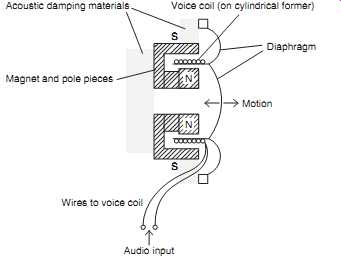
FIG. 3: Typical moving-coil headphone transducer. The current through the
voice coil creates a force on the diaphragm, which vibrates it in sympathy
with the audio input.
===
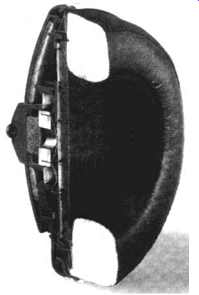
FIG. 4 : Cut-away view of a Sennheiser headphone earpiece showing the diaphragm,
magnets, and acoustic damping materials.
===
3.3 Electrodynamic / Orthodynamic (planar magnetic)
This type of headphone is essentially in the same family as the moving-coil type, except that the coil has, in effect, been unwound and fixed to a thin, light, plastics diaphragm.
The annular magnetic gap has been replaced by opposing bar magnets, which cause the magnetic field to be squashed more or less parallel to the diaphragm. The " coil " is in fact now a thin conductor zig-zagging or spiraling its way across the surface of the diaphragm, oriented at right angles to the magnetic field so that sending a constant direct current through the conductor results in a more or less equal unidirectional force, which displaces the diaphragm from its rest position. An alternating music signal therefore causes the diaphragm to vibrate in sympathy with it, creating a sound-wave analogue of the music.

above: Elements of a planar magenetic headphone, like the Audeze Lcd-3
Image: inner-fidelity
The great advantage of the electrodynamic, or flat diaphragm type of headphone, is that the conductor moves the air almost directly, without requiring a cone to carry the vibrations from a coil at one point, to the air at another, with the very real risk of introducing colorations, break-up, distortion, and uneven frequency response.
Unlike a cone, the film diaphragm does not have to be very stiff, although it’s sometimes pleated to give it a little more rigidity because the force on it’s not entirely uniform. As a result, it can be very thin and light, which results in a lack of stored energy and a very great reduction of the other problems inherent in cones as outlined earlier.
Consequently, good headphones of this type tend to sound more like electrostatics, with an openness and naturalness that eludes even the best moving-coil types.
Electrodynamic headphones tend not to be quite so sensitive as their moving-coil counterparts and are often best used at the output of amplifiers, rather than with cassette decks. Impedance is usually medium to low and is almost entirely resistive.
3.4 Electrostatic
The electrostatic headphone, like the electrodynamic, uses a thin plastics diaphragm, but instead of a copper track it requires only to be treated to make it very slightly conductive so that the surface can hold an electrostatic charge. It can consequently be very light.
The diaphragm ( FIG. 5 ) is stretched under low mechanical tension between two perforated conductive plates to which the audio signals are fed via a step-up transformer.
===
Step-up transformer; Input from power amplifier; High voltage DC power supply; Light plastics membrane diaphragm with conductive coaling; Diaphragm vibration; Acoustically transparent perforated metal plates
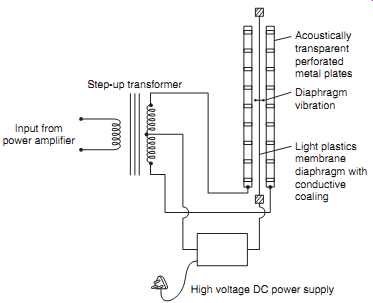
FIG. 5 : Electrostatic headphone. The transformer steps up the audio signal
for feeding to the outer metal plates. The central diaphragm is given a high
DC charge with a power supply. An audio signal causes the diaphragm to be
attracted alternately to the outer plates.
===
The central diaphragm is kept charged to a very high voltage with respect to the outer plates using a special type of power supply, capable of delivering only a nonlethal, low current, high voltage from the house mains, or, alternatively, by an energizer, which uses some of the audio signal to charge the diaphragm to a similarly high but safe voltage.
The diaphragm experiences electrostatic attraction toward both outer plates. The spacing between the plates and diaphragm, the voltage between them, and the tension on the diaphragm are all chosen carefully so that the film does not collapse on to either plate.
Instead it stays in a stable position between the outer plates, attracted to each one equally during no-signal conditions. When an audio signal is fed to the transformer, it’s stepped up at the secondary from a few volts to around a thousand volts. This unbalances the forces on the diaphragm in sympathy with the audio signal, causing it to be attracted alternately to each plate and of course reproducing an analogue of the original sound.
The push-pull action of the transformer and plates effectively produces a linear force on the diaphragm regardless of its position between the plates-unlike normal single ended electrostatic attraction, which follows an inverse square law and would create large amounts of distortion in a transducer.
The electrostatic headphone is therefore the most linear of all the types available and with its super-light diaphragm, weighing less than several millimeters of adjacent air, it’s not surprising that good headphones of this type can offer superb quality sound-the best available. However, this essentially simple technique is the most complex to execute. Not surprisingly, electrostatic headphones are the most costly to manufacture and buy. FIG. 6 shows details of the Stax electrostatic type.
They are generally less sensitive than moving-coil types and are usually operated directly from the amplifier's loudspeaker terminals. Due to the capacitive nature of the electrostatic element and the complex inductive/capacitive nature of the transformer, they tend to have more reactive impedance than other types, but this does not usually pose any problem for good amplifiers. Air ionization between the diaphragm and the plates limits the maximum signal and polarizing voltages. Likewise, the signal voltage on the plates must not exceed the polarizing voltage. These factors impose limitations on the maximum sound pressure level that can be achieved.
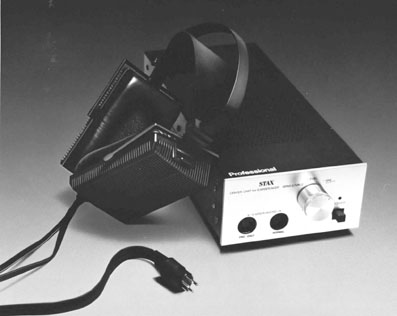 FIG. 6 : (a) Stax Lamda PRO electrostatic
headphones and energizer/amplifier unit.
FIG. 6 : (a) Stax Lamda PRO electrostatic
headphones and energizer/amplifier unit.
3.5 Electrets
Basically, the electret headphone is an electrostatic type but using a material that permanently retains electrostatic charge--the electrostatic equivalent of a permanent magnet. The electret has the advantages of the conventional electrostatic, but does not require an additional external power supply. It’s similarly restricted in maximum sound pressure level, although both types produce perfectly adequate sound pressure levels with conventional power amplifiers.
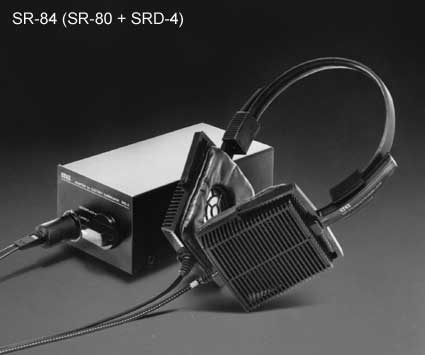
above: Stax electret headphone and adaptor.
3.6 High Polymer (planar magnetic)
High polymer is basically a generic name to cover piezoelectric plastics films such as polyvinylidene fluoride film.
Piezo-electric materials have been known for many years. They change their dimensions when subjected to an electric field or, conversely generate a voltage when subjected to mechanical strain.
The ceramic barium titanate and crystals such as Rochelle salt and quartz are two materials that have been used for many years in devices such as crystal phono cartridges, ultrasonic transducers, and quartz oscillators but their stiffness is too high and mechanical loss too low for wide-frequency-range audio applications.
High polymer films, however, are very thin, some 8 to 300 µm, and have very low mechanical stiffness, which makes them ideal for transducer diaphragms. The basic film is made piezo electric by stretching it to up to four times its original length, depositing aluminum on each side for electrodes, and polarizing with a high DC electric field at 80-100ºC for about an hour.
When voltage is later applied across the film, it vibrates in a transverse direction, becoming alternately longer and shorter. If the material is shaped into an arc, this lengthening and shortening are translated into a pulsating movement, which will generate sound waves in sympathy with the electrical input signal.
It’s a relatively simple matter to stretch the high polymer diaphragm across a piece of polyurethane foam pressing against a suspension board to create an arc-shaped diaphragm and make a very simple form of headphone.
High polymer transducers were first developed by Pioneer. Advantages are claimed to be a very low moving mass, similar to electrostatics but without the complexity, and, of course, no power supply. The high polymer headphone is also claimed to be much more sensitive than the electrostatic type and unaffected by humidity, which can reduce the sensitivity of electrostatics. Harmonic distortion is also said to be very low at under 1%.
4. Basic Headphone Types (form factor)
Apart from the many different operating principles described earlier, there are two basic categories into which headphones will fall, although some designs will include features of both and will therefore not function purely as one type or the other.
4.1 Velocity (open air)
The open or free-air headphone, known as the velocity type, sits just away from the ear flap, often resting on a pad of light, acoustically transparent reticulated foam. This type of headphone cannot exclude outside sounds, which can intrude on the reproduced music, but the best models can produce a very light, open, airy sound. This type of headphone has been very successful in recent years, particularly since the growth in personal stereos—iPods and iPhones--where their light weight and compact dimensions have made them ideal.
A theoretically perfectly-stiff diaphragm operating in free air, like a velocity headphone, has a frequency response that falls away at low frequencies at 6 dB per octave and so you would expect the system not to work particularly well. However, by juggling with the parameters of mechanical diaphragm stiffness, mass, and acoustic damping, it’s possible to get a perfectly adequate low-frequency performance from velocity headphones, which is not dependent on the exact position of the headphones on the ears. The rear face of the diaphragm in velocity headphones is essentially open to the air, which helps impart a more open airy sound, but does not exclude outside noises.
4.2 Pressure (closed or sealed)
The other category is the closed or circumaural headphone, known as the pressure type, which totally encloses the ear flap and seals around it with a soft ear cup. The principal advantages of this type of headphone are that sealing around the ear makes it possible to pressure couple the diaphragm to the ear drum from about 700 Hz down to very low frequencies, with a linear response down to 20 Hz easily achievable, as long as the seal is effective ( FIG. 7 ). The frequency response of the pressure type, unlike the velocity type, is essentially flat down to a low frequency, which is dependent only on the degree of sealing. A poor seal due to inadequate headband pressure, or the wearing of spectacles, for instance, can cause a marked deep bass loss.
The principal disadvantages are that closed headsets tend to be heavier, require greater headband pressure, and can make the ears hot and uncomfortable. Pressure-type headphones can be either closed backed or open backed. Closed-backed headphones offer the exclusion of outside sounds as a distinct advantage in situations that require this, such as recording studios, for instance. However, there is a body of opinion that judges the sound of closed-back headphones to be closed-in compared to open-backed types.
FIG. 7 : Supra-aural headphones shown from Amazon.com's product catalog.
4.3 Intra-Aural (in-ear monitors or ear bud (as in Apple or iPod))
Another category that has been recently commercialized is the intra-aural type, which actually fits into the ear to provide very lightweight personal listening ( FIG. 8 ). Obviously the transducer size limits the bass performance, although this is helped by channeling the sound almost directly into the ear canal.
FIG. 8 :Amazon.com product catalog lists many in-ear-monitors (IEM).
5. Measuring Headphones
Both types of headphone work into an entirely artificial environment in which the close proximity of the diaphragm and, in the case of the closed headphone, a trapped volume of air, modifies the frequency response as perceived by the ear. This situation is additionally confused by the fact that each person's ears are different in shape and at high frequencies will introduce their own pattern of reflections, causing reinforcements and cancellations at different frequencies. Measuring headphones with artificial ears reveals some pretty horrifying curves, but the results on the heads of real listeners are equally alarming.

The fact of the matter is that even if a headphone were made to measure " flat " on a person's head as measured inside the cavity at the entrance to the ear, the headphone would not sound right. This is quite simply because, even when listening without headphones, the sound pressure response at this point, in the ear canal, at the eardrum, or wherever you care to measure it, is simply not flat. We’re not dealing with an amplifier or an electromechanical transducer but the human ear. The ear and brain have of course figured out that the normally complex pattern of reflections and cancellations with which it has to continually deal are perfectly natural and they sound that way.
Unfortunately, each individual's ears make their own different imprint, but there are some rough trends that can be observed. For instance, there is generally a 2-kHz to 5-kHz boost, a dip around 8 kHz, and all sorts of peaks and dips above 8 kHz. For a natural sound balance with headphones, they should produce measurements that follow this rough trend when tested on real ears. However, measurements carried out using headphones on real ears or artificial ears (designed to mimic real ears for the purposes of testing) reveal differing results that can only be interpreted by the experienced observer.
It’s clear, though, that published response graphs of headphones should be taken with a very large pinch of salt.
6. The Future
Guessing on the future is always impossible-one can only be guided by current trends, which are unavoidably based on the past! It’s very difficult to see how headphones will develop. New principles of operation are unlikely to spring out of nowhere. Just about all the likely candidates of moving air have been exploited. However, as with the high polymer headphone, the invention of new, better materials can often turn a previously impossible type of headphone into a reality. It’s consequently unlikely that tomorrow's headphones will be anything other than developments of today's (unless it becomes possible to inject the audio signals, suitably coded by digital techniques, directly into the auditory nerve or brain).
That may be highly unlikely, not to say impractical and unnecessary, but digital technology could play a part in equalizing the response of headphones. For instance, it’s possible to equalize the headphone signal so that the response at the ears when using headphones more closely mimics the headphone-less characteristic. It would be possible to undertake this equalization digitally to exactly compensate for each individual and give improved sound quality. At present this would be fairly expensive, but with processing power falling it should not be long before it’s viable commercially. The technology already exists.
Likewise it’s perfectly feasible to build digital filters that compensate for each individual's head-baffle effect, thus converting stereo into dummy-head binaural sound for headphone listening. This could all be done at the same time as the earphone-response correction outlined earlier. The only question marks are the very limited market for such equipment and the high cost of developing it. The two conflicting sides (development costs versus economies of manufacturing scale) may not add up to a very balanced equation now, but who knows about the future?
Finally, the diaphragm itself may be driven not by analogue but directly using digital signals. This is not nearly so far-fetched as it sounds. With compact disc as the source, and given the transducer technology, it would be perfectly feasible to retain the signals in digital form from microphone to headphone, with any filtering or correction (as outlined earlier) carried out without the signal having to leave the digital domain.
Guess work may be way off beam, but there is one thing that is certain. There is a great future ahead for headphones.
== ==
ALSO SEE:
== == ==